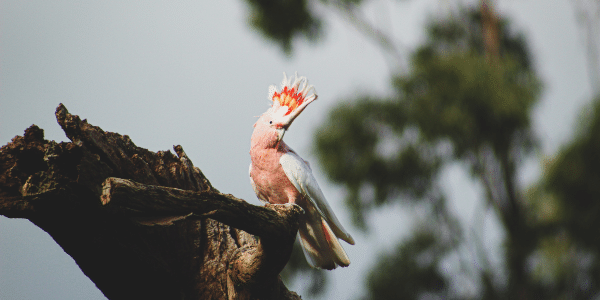A Word from the Sustainable Agriculture Facilitator (June 2025)
While driving between Hay and Moulamein over the weekend, I saw two Major Mitchell’s Cockatoos – a rare sight in the Riverina.
Also called Pink Cockatoos (Lophochroa leadbeateri), these birds are known for their white and pale pink feathers and a crest marked with pink, yellow, and red. Their call is clear and often heard before they come into view.
They live in semi-arid woodlands, especially areas containing:
- Slender Cypress Pine (Callitris gracilis)
- Black Box (Eucalyptus largiflorens)
- Buloke (Allocasuarina luehmannii)
- Mallee Eucalypts (Eucalyptus spp.)
These trees provide important nesting hollows and food sources. Unfortunately, many of these habitats are under pressure from land clearing, grazing, and firewood collection.
Major Mitchell’s Cockatoos are often seen feeding on the ground, searching for seeds, bulbs, and roots. This makes them more vulnerable to predators, particularly feral cats and foxes.
They are listed as:
- Vulnerable in NSW under the Biodiversity Conservation Act
- Endangered nationally under the EPBC Act
Key threats include:
- Loss of nesting hollows in old trees
- Fragmentation of habitat
- Ground-based predation
- Competition for nest sites with Galahs (Eolophus roseicapilla) and Little Corellas (Cacatua sanguinea)
If you see one, consider recording your sighting on Birdata (BirdLife Australia) or iNaturalist. Local observations help track their distribution and guide future conservation efforts.
Let’s continue to look out for and protect the species that make our landscapes unique.
This article was written by Jade Auldist. Jade is the Sustainable Agriculture Facilitator for the Riverina region. Her role supports farmers, industry and community groups (including Landcare Groups) to adopt new and innovative sustainable agriculture practices.
For further information on this article, please contact Jade at jade.auldist@lls.nsw.gov.au.







